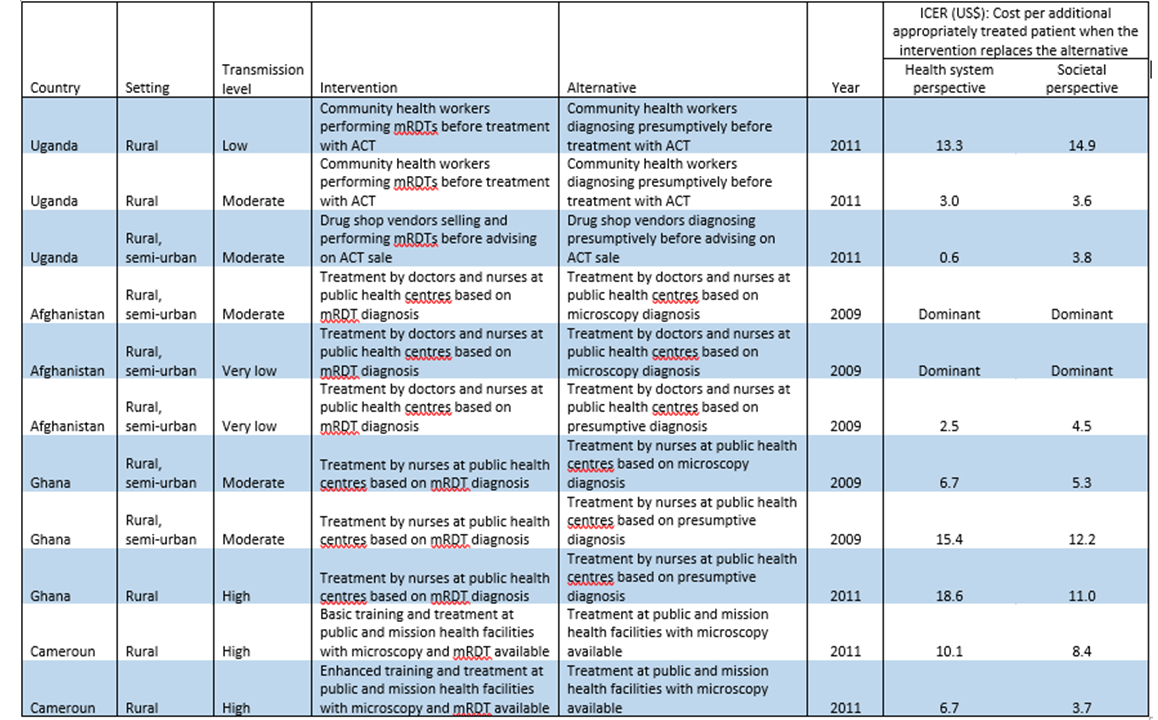Cost-effectiveness analyses in the ACT Consortium
The demand by the population for health services is higher than resources made available to the health sector in most countries. Cost-effectiveness analysis provides input to decision-making in the health care sector by estimating cost and effects in terms of improved health of different health interventions. A key concept of the cost-effectiveness analysis is the ‘incremental cost-effectiveness ratio’ or the ‘ICER’ which measures the difference in cost and effects of a health intervention compared to an alternative health intervention where the latter is typically the current practice in the health sector. The ICER may therefore be interpreted as: the cost per additional unit of health effect when a health intervention replaces an alternative health intervention.
The ACT Consortium has conducted a number of cost-effectiveness analyses in different settings focusing on the impact of the introduction of malaria rapid diagnostic tests (mRDTs) to replace an alternative diagnostic method. The measure of effect utilised in most ACT Consortium studies is ‘appropriate treatment for malaria with ACT’ defined as: a patient with a positive reference diagnosis of malaria receiving a course of ACT or a patient with a negative reference diagnosis not given an ACT. The reference diagnosis was expert microscopy of blood slides prepared at the time of a consultation but read at a later stage.
The ICER of cost-effectiveness analyses in the ACT Consortium is therefore: the cost per additional patient appropriately treated for malaria with ACT when mRDT diagnosis replaces an alternative diagnostic method
Cost-effectiveness analyses have been performed from both a health sector perspective where only costs borne by the public health sector are included and from a more broad societal perspective where costs borne by households and volunteers are added.
Results from cost-effectiveness analyses in the ACT Consortium, incremental cost-effectiveness ratios (ICERs) in US$, 2009-2011.

Notes: The intervention is ’Dominant’ if it has lower cost and higher effect than the alternative.

